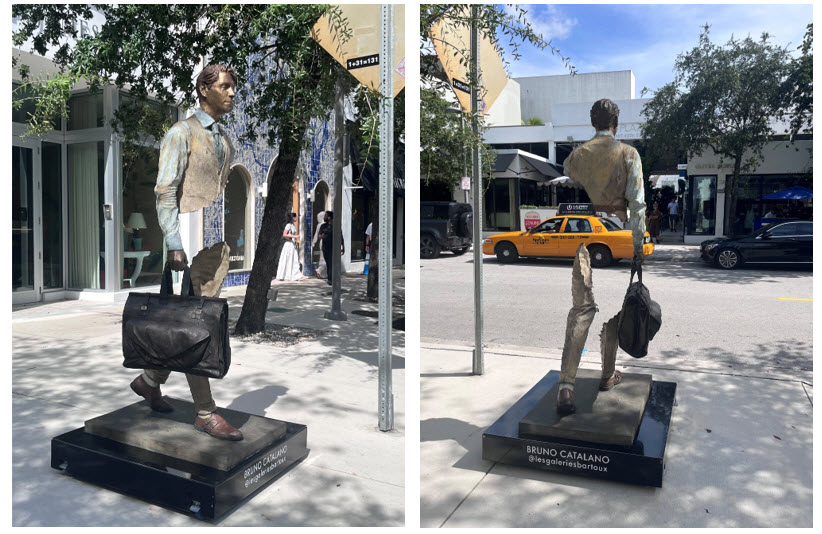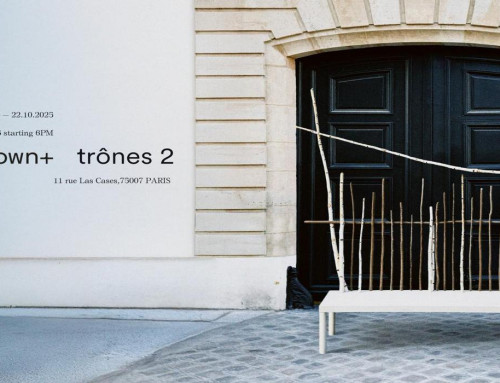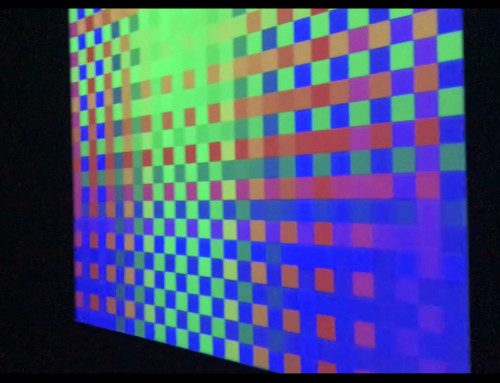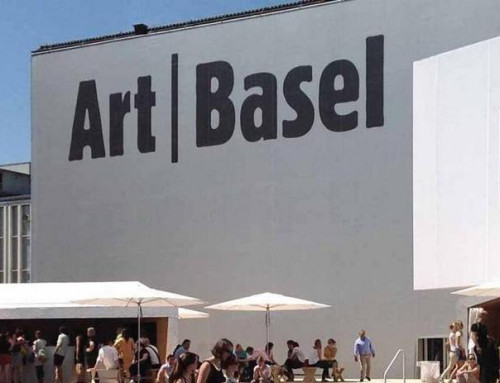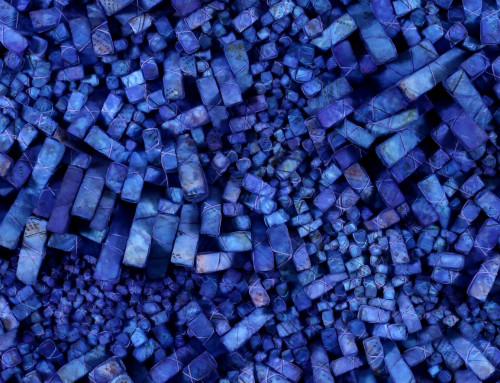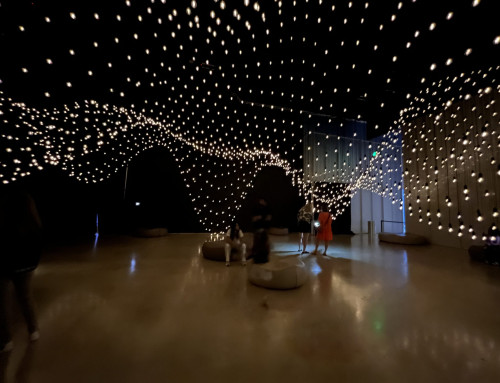By Mario Fallon
A hole, a tear, is often a mistake for a sculpture. In Bruno Catalano’s case, however, it completes the whole.
When I first saw one of his “travelers” (Les voyageurs series) on the sidewalk, I had to pause and make sure my eyes were not deceiving me. The sculpture was a realistic depiction of a man walking, dressed in a vest and tie and carrying a suitcase, but a large part of his body was hollow. For a second, it seemed as if his body was in motion, merging with the people and the cars that were passing by. It totally achieved Bruno’s intention, which is for the viewer to evoke memories and things that every traveler encounters and leaves behind. He reminds us that absence, lack, separation are parts of our identity.
I also noticed that most of his sculptures are people going to work or people working, thus evoking an emotional reflection of the viewer over the existential issue of work, labor, and what is lacking in their lives.
Bruno was born in Morocco but left with his Sicilian family to France at an early age. He worked in a marine company as a sailor for four years and always cites the experience as the central point to his inspiration. His initial work of bronze sculptures was compact and conventional. In 2004, while working on a sculpture of Cyrano, a man deeply self-conscious of his large nose, Bruno decided to represent this tragic flaw with a hole on his chest. This idea became a signature of his work.
Bruno Catalano’s surreal work also challenges the laws of gravity as he deals with the gravity of the void, and manages to reach a sustainable harmony between the solid, concrete body and the negative space that becomes part of the body.
His sculptures have been spotted all over the world, including the port of the Marseille, the gardens of Singapore, the Piazza de Ferrari in Genova, Italy, Park Avenue in New York, the banks of the Thames in London, the Design District in Miami, among many others.
He is currently spotlighted in a major presentation titled Traversée Commune at the Centre d’Art de Crest in Crest, France (21 June – 5 October 2025). This is his first major institutional exhibition in France, where the artist reveals not just his iconic “Voyageurs” sculptures but the very artistic process behind them: the evolution of raw material—from clay to plaster, wax to bronze—and the collaborative foundry steps that shape the work. Meanwhile, his open-air installation Travelers – Park Avenue in New York (May 2024 – May 2025) was extended into 2025, bringing nine monumental bronze figures to Manhattan’s Park Ave and continuing to explore themes of travel, absence and identity. Together these exhibitions mark a moment of institutional recognition for Catalano’s poetic language of fragmentation and movement — reminding us that even in a globalized world, what is left behind can also shape the journey.




